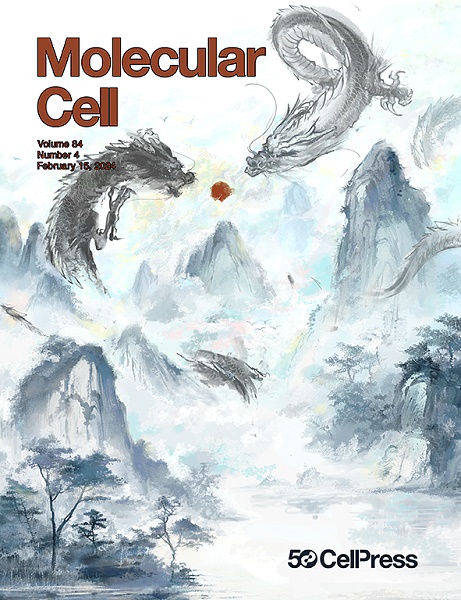最后,又是 POT1:磷酸化使人类端粒蛋白 POT1 能够招募富 C 链末端复制机器
IF 14.5
1区 生物学
Q1 BIOCHEMISTRY & MOLECULAR BIOLOGY
引用次数: 0
摘要
最近,蔡(Cai)等人1在《细胞》(Cell)杂志上报道了人类保护蛋白POT1的磷酸化如何使其招募端粒富C链复制机制,为端粒生物学中一个未被充分研究的领域提供了机理上的见解,并对端粒生物学疾病产生了影响。本文章由计算机程序翻译,如有差异,请以英文原文为准。
At the end, it is POT1 again: Phosphorylation allows human telomeric protein POT1 to recruit the C-rich strand end replication machinery
Recently in Cell, Cai et al.1 reported how phosphorylation of human shelterin protein POT1 allows it to recruit the telomeric C-rich strand replication machinery, providing mechanistic insights into an understudied area of telomere biology with implications for telomere biology disorders.
求助全文
通过发布文献求助,成功后即可免费获取论文全文。
去求助
来源期刊

Molecular Cell
生物-生化与分子生物学
CiteScore
26.00
自引率
3.80%
发文量
389
审稿时长
1 months
期刊介绍:
Molecular Cell is a companion to Cell, the leading journal of biology and the highest-impact journal in the world. Launched in December 1997 and published monthly. Molecular Cell is dedicated to publishing cutting-edge research in molecular biology, focusing on fundamental cellular processes. The journal encompasses a wide range of topics, including DNA replication, recombination, and repair; Chromatin biology and genome organization; Transcription; RNA processing and decay; Non-coding RNA function; Translation; Protein folding, modification, and quality control; Signal transduction pathways; Cell cycle and checkpoints; Cell death; Autophagy; Metabolism.
 求助内容:
求助内容: 应助结果提醒方式:
应助结果提醒方式:


